What are the worst rhododendron problems? The issues experts say you should look out for
Keep your shrub in top health by avoiding these common rhododendron problems
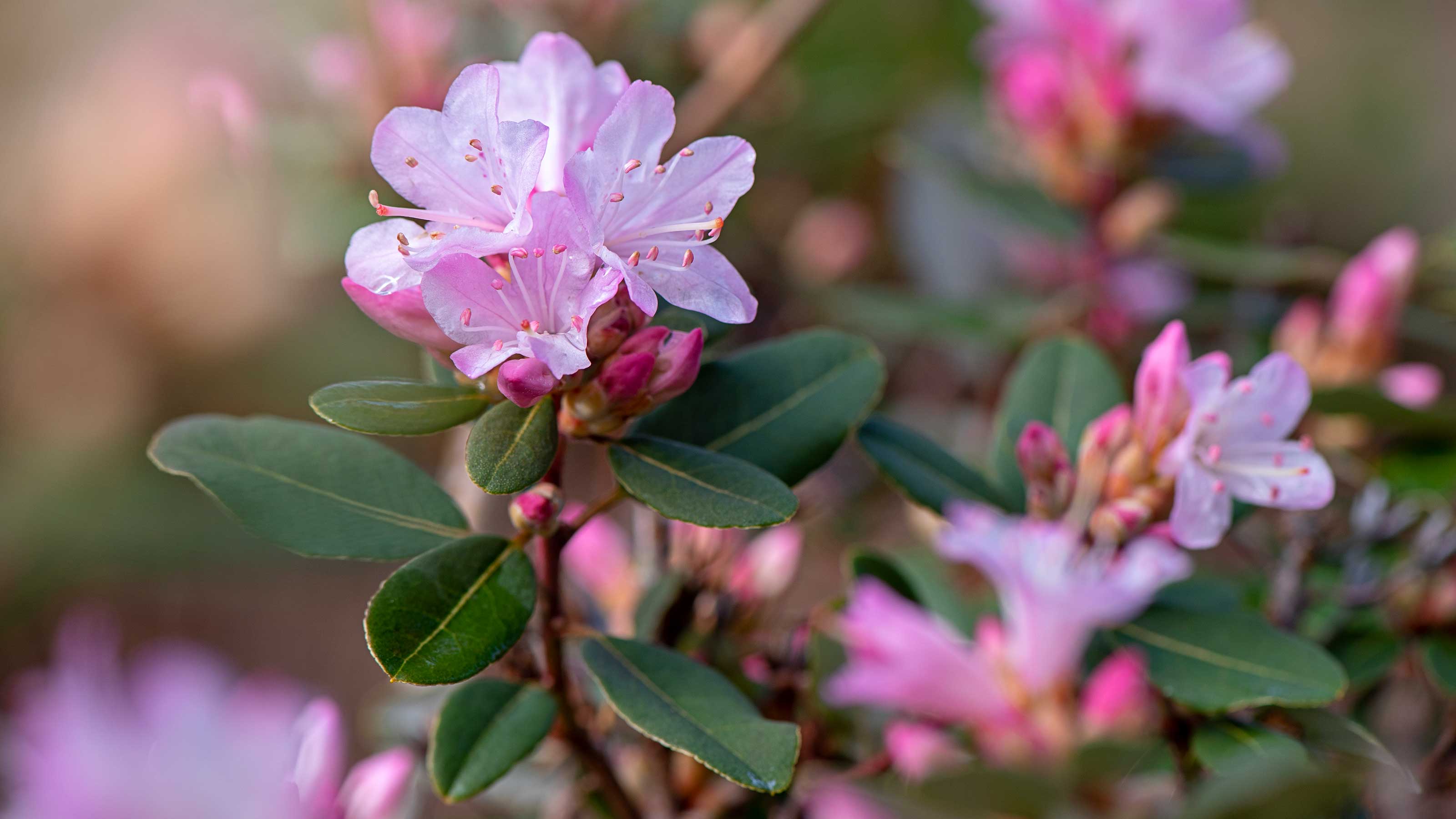

There are some common rhododendron problems to look out for when growing these spring-flowering beauties.
They are generally quite low-maintenance shrubs. However, as with all plants, pests, diseases, and adverse environmental conditions can all take their toll. But, knowing how to identify issues early – or even prevent them from happening in the first place – gives your shrubs a better chance at staying happy and healthy.
These tips will help, so you can keep enjoying your rhododendron for as long as possible in your backyard.
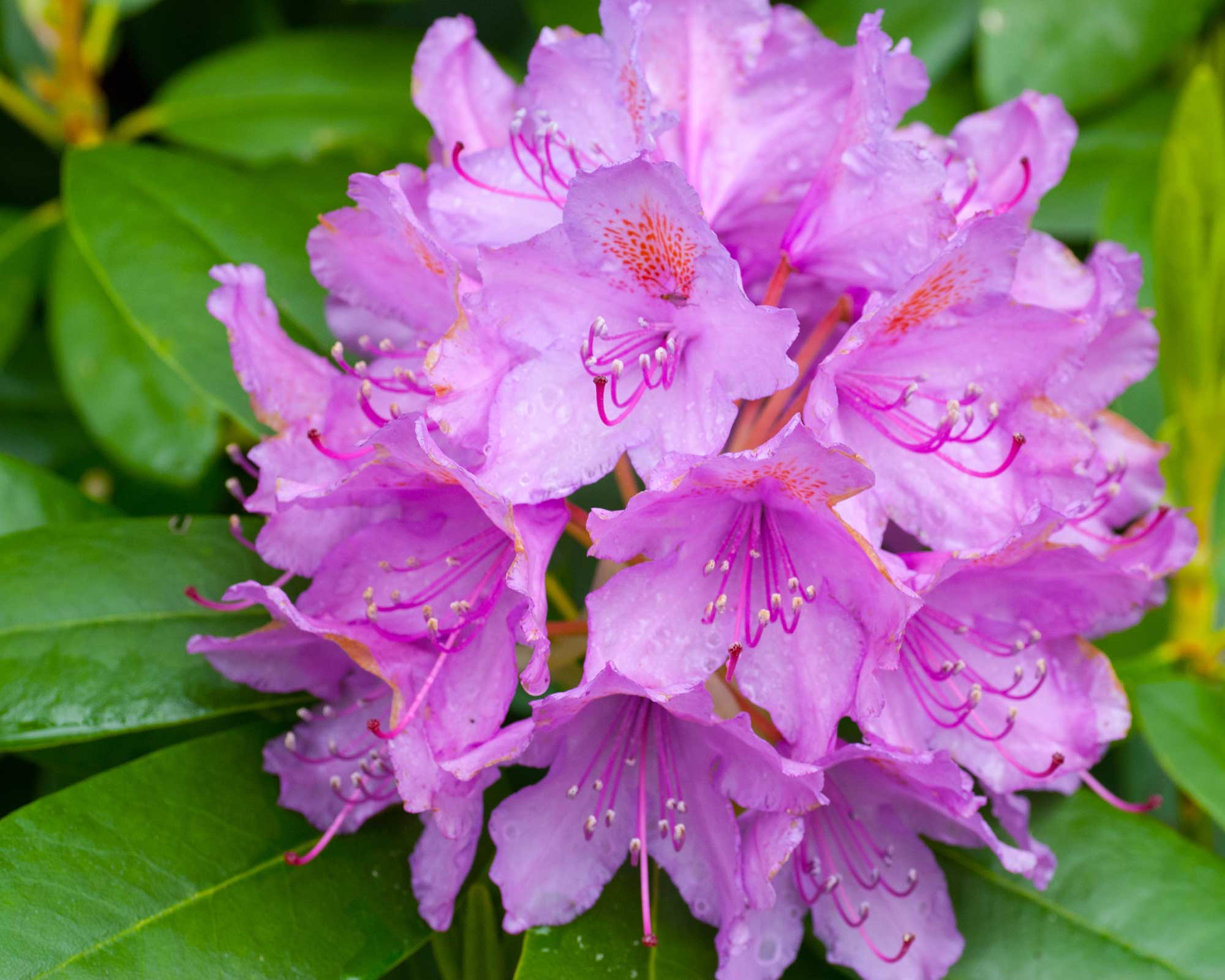
These shrubs have beautiful clusters of blooms in spring
3 rhododendron problems to keep a lookout for
Help your shrubs thrive by avoiding these common rhododendron problems.
1. Pest problems for rhododendrons
If you've noticed black sooty mold all over your rhododendron's leaves, then scale insects are likely to blame.
'Unfortunately, these tiny creatures, characterized by pronounced white lozenges, exude honeydew (a kind of syrup) which attracts the sooty mold,' explains the Amateur Gardening team. 'This then blackens and weakens the leaves.'
You can overcome the bugs by spraying your shrubs with a pesticide, such as Bio Provado Ultimate Bug Killer (available on Amazon). When they are dead, and not releasing honeydew, the sooty mold will cease infecting your plant, the experts continue. You can then wipe it away with a soft cloth soaked in water or milk – there are no fungicides against it.
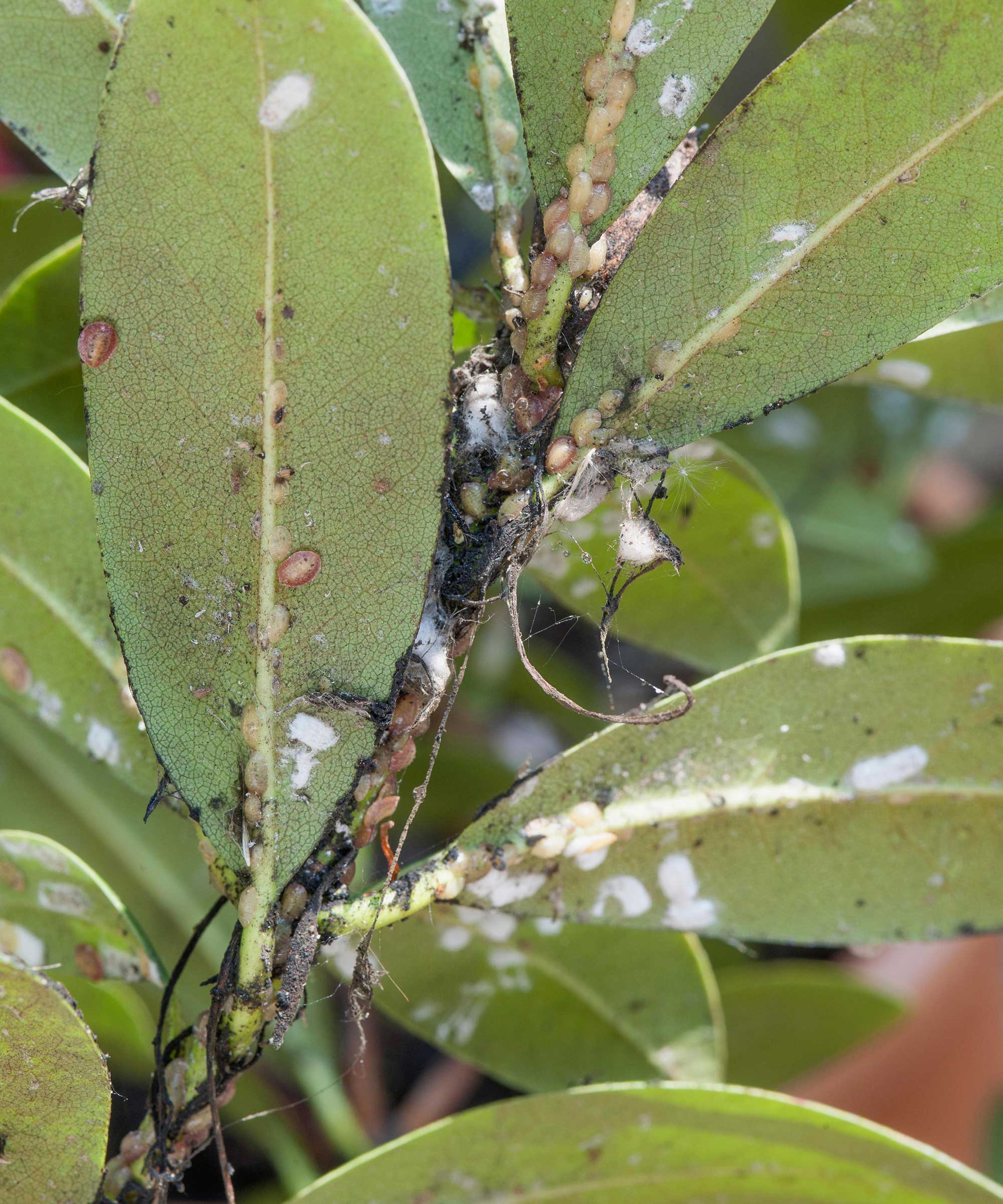
Scale insect can attract sooty mold
Another common pest problem for rhododendrons is vine weevils, which can cause sudden death in the plants.
The tiny, curled, dirty-white grubs with brown heads eat the roots. They can be particularly problematic in container gardens.
If your pot-grown rhododendron has suddenly died, despite being sufficiently watered, lift the plant from the container and check for the larvae. 'If there are any, bin the compost as it would be unwise to dig it into borders contaminated by weevil grubs,' says John Negus, a gardening expert from Amateur Gardening.
You can try to control these bugs with a vine weevil trap, placing it close to your shrub, John adds. These consist of a specially designed, grooved board filled with a gel that's impregnated with nematodes, he explains. The adult beetles crawl into the grooves by day where the nematodes infect and kill them without harming anything else. Ideally, set traps between early summer and early fall.

John regularly answers readers' questions in Amateur Gardening magazine, many of which are around shrubs, such as rhododendrons. As well as being a garden journalist for over 50 years, he has also written four books and delivered many talks on horticulture.
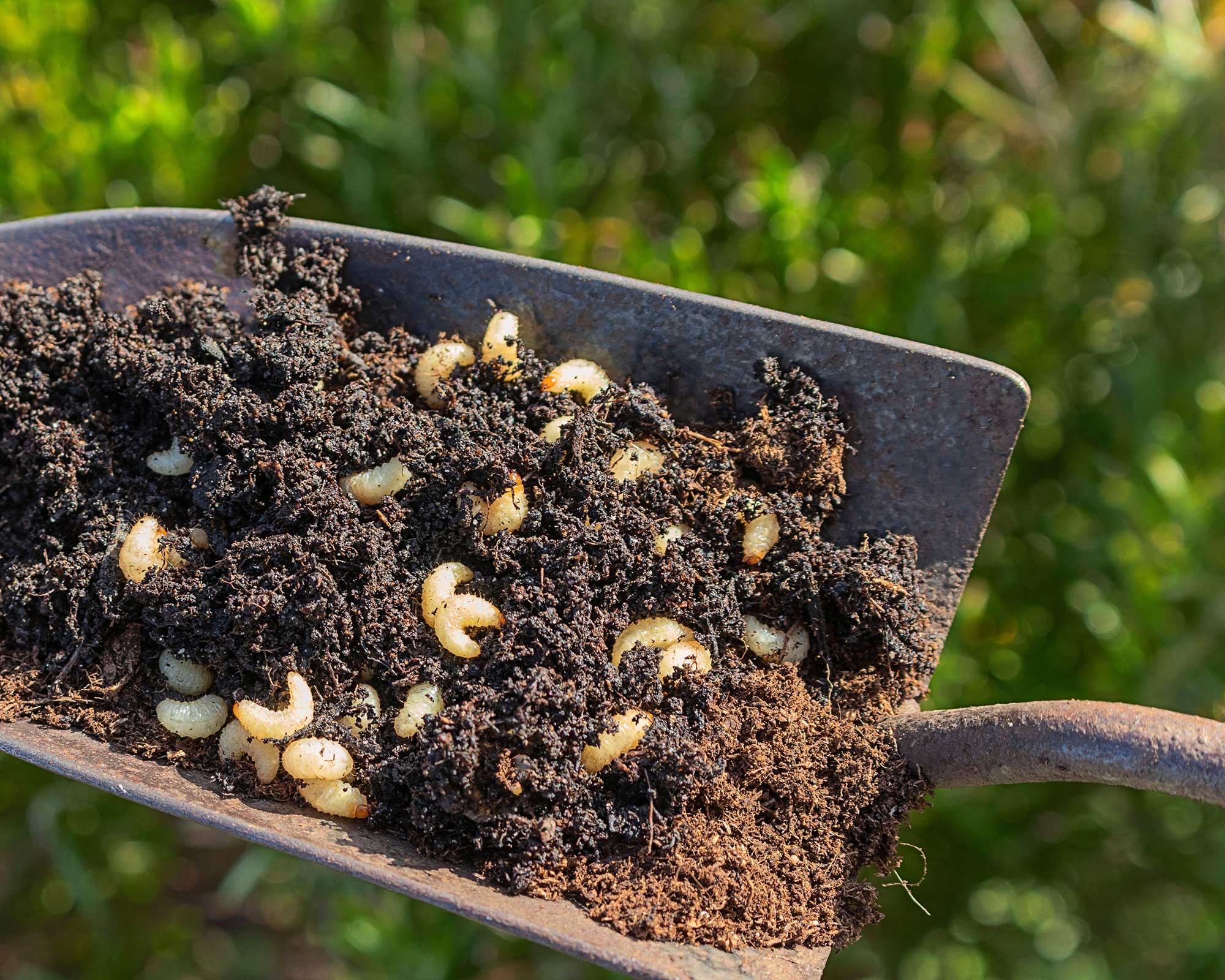
Vine weevil grubs chew through roots
2. Too much or too little water
If you've noticed the leaves on your rhododendron turning yellow and dropping off the plant, a period of drought over summer and early autumn could be to blame. 'This can easily happen to container plants and azaleas and rhododendrons are particularly susceptible,' says John.
'Each year, apply a leaf mold mulch, composted bracken or pulverized conifer bark to help trap precious moisture. Don’t let the soil dry out in summer by watering thoroughly and regularly.' Using collected rainwater from the garden is best.
Conversely, yellow leaves can also be caused by waterlogged soil, either from over-exuberance with the watering can or wet weather. If it's the latter, and your shrub is in a container, ensure the drainage holes are unblocked and raise the pot up onto feet to help any trapped water escape. Adding grit to the compost when you plant can also help with drainage.
Remember, also, that these shrubs do best in acidic soil types. So, if yours looks like it's struggling, you may need to transplant it somewhere more suitable and feed it monthly when flowering with an ericaceous food. Liquid-feeding it monthly with a seaweed fertilizer from mid-spring to early fall can also help reinvigorate it, says John.
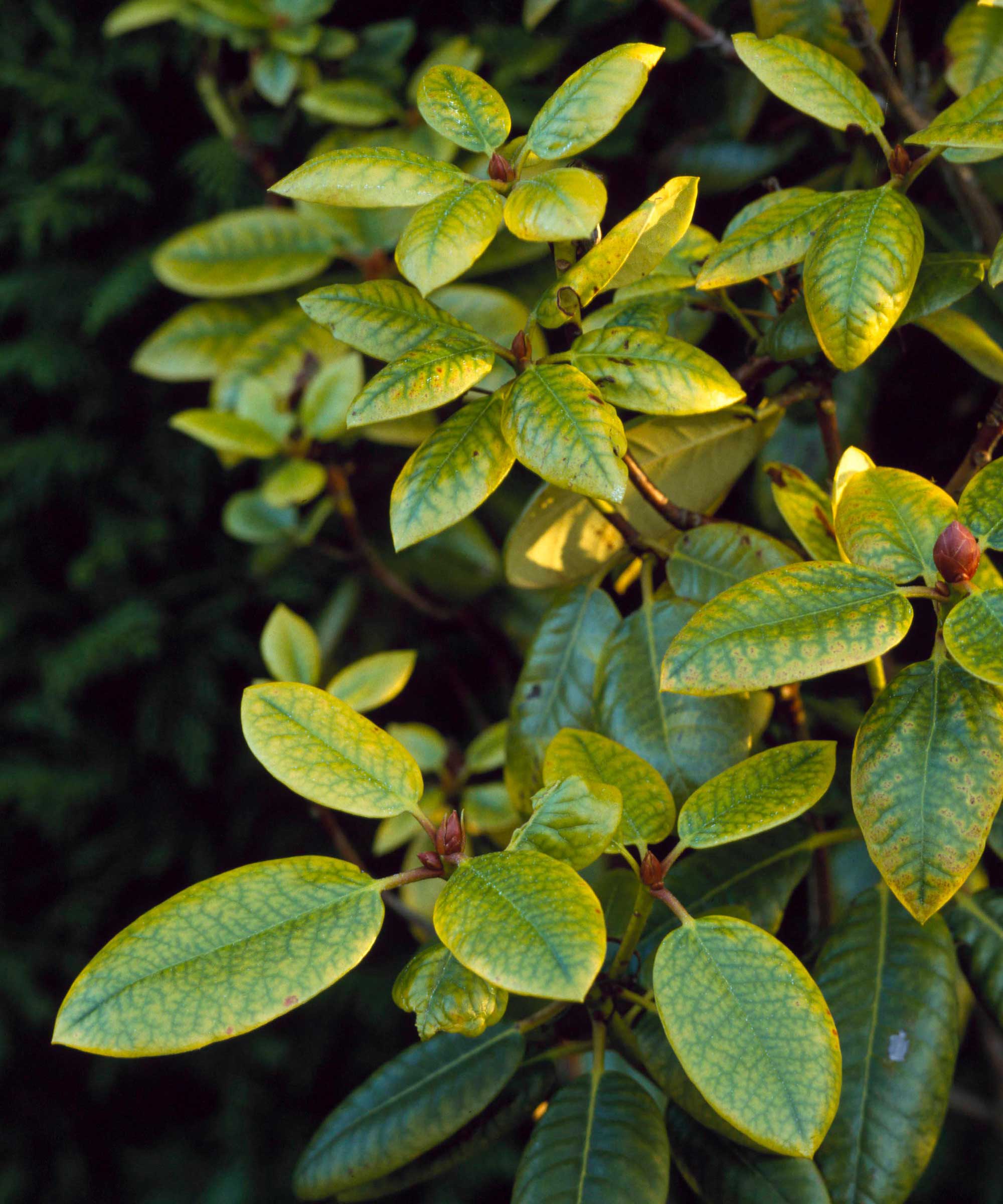
Yellowing leaves are a sign of adverse environmental conditions
3. Honey fungus and other rhododendron diseases
If the leaves and flowers of your rhododendron are dying before they are opening, the problem could be honey fungus – a fungal disease. 'Check for honey fungus by exposing a largish root and peeling back 1in (2½cm) or so of bark,' advises John. 'If white mold is visible, this disease is responsible.'
Alternatively, the problem could be root death. The only way you can tell is by cutting a root in half. If the center of the root is black and dead, root death is the culprit, he says.
Sudden oak death, which also affects rhododendrons, can cause leaves and shoots to wilt and die, too. 'Sadly there are no cures for the above problems,' John says. 'If symptoms persist and there is no new growth you will, I am afraid, have to remove the bush – roots and all.'
Powdery mildew, however, is thankfully one of the rhododendron problems that isn't as troublesome. It's identified by pale green, reddish-purple or yellow patches on the upper surface of the foliage in evergreen rhododendrons (or white, powdery patches on deciduous varieties), says the RHS. Unless severe, it can generally be tolerated, they add. If needs be, you can apply a fungicide, such as Fungus Clear Ultra, available on Amazon, to tackle it.
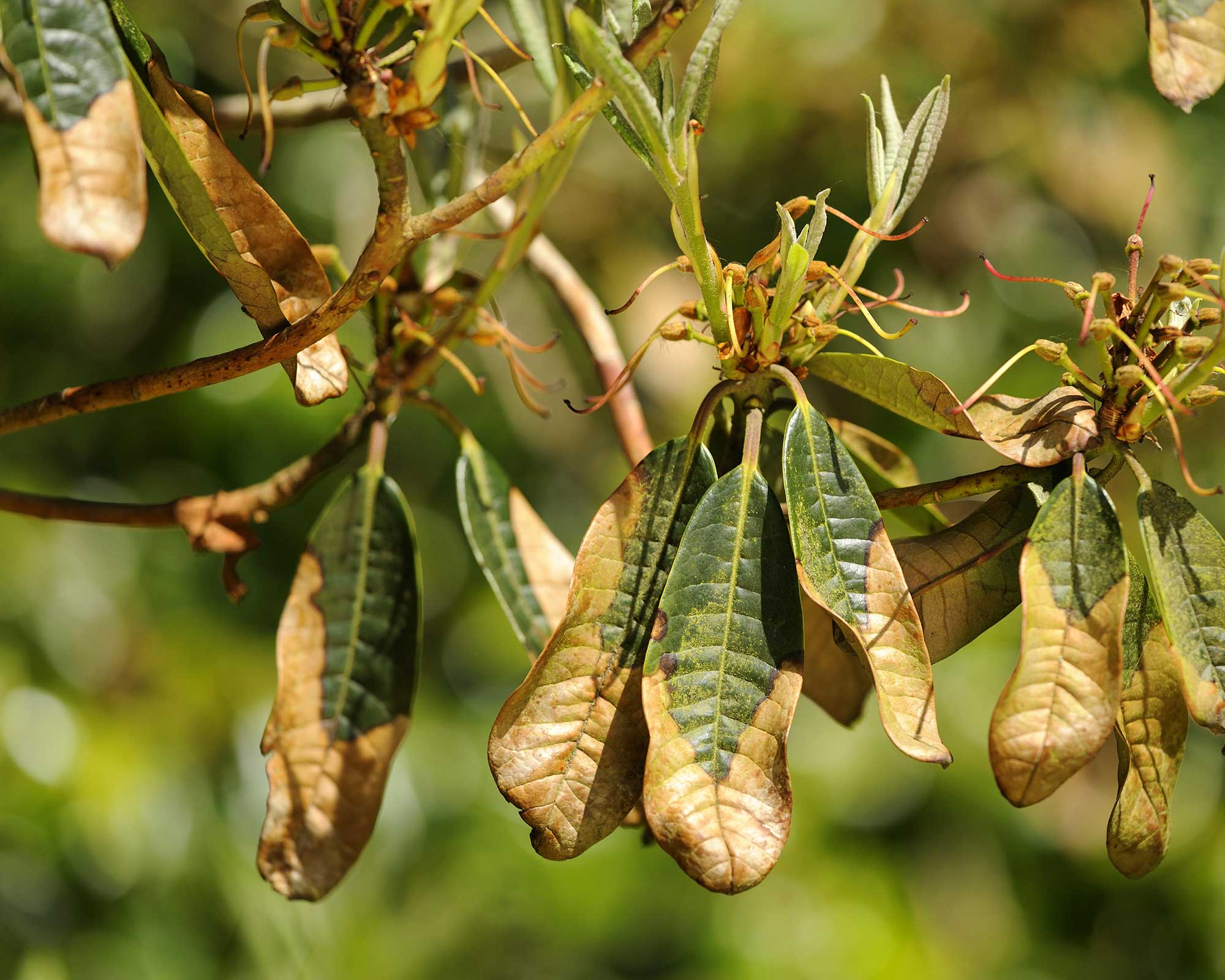
This shrub has succumbed to sudden oak death

The garden was always a big part of Holly's life growing up, as was the surrounding New Forest where she lived. Her appreciation for the great outdoors has only grown since then. She's been an allotment keeper, a professional gardener, and a botanical illustrator – plants are her passion.
